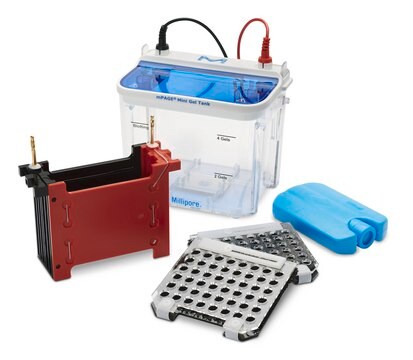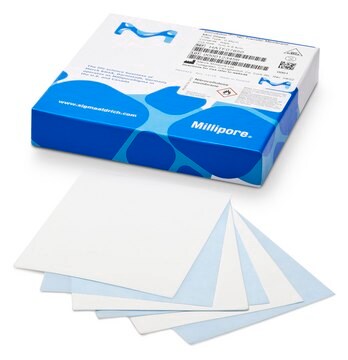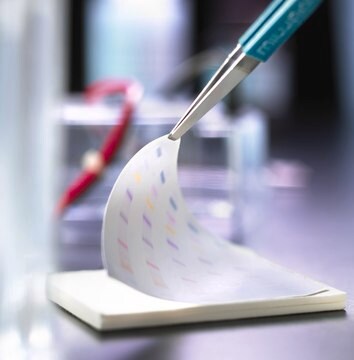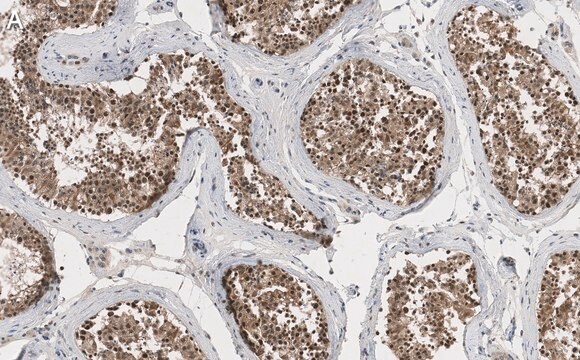MABT323
Anti-CEACAM6 Antibody, clone 1H7-4B
clone 1H7-4B, from mouse
Sinónimos:
CEACAM6, Carcinoembryonic antigen-related cell adhesion molecule 6, Non-specific crossreacting antigen, Normal cross-reacting antigen, CD66c
About This Item
Productos recomendados
origen biológico
mouse
Nivel de calidad
forma del anticuerpo
purified antibody
tipo de anticuerpo
primary antibodies
clon
1H7-4B, monoclonal
reactividad de especies
human
técnicas
ELISA: suitable
flow cytometry: suitable
immunohistochemistry: suitable (paraffin)
western blot: suitable
isotipo
IgG1κ
Nº de acceso NCBI
Nº de acceso UniProt
Condiciones de envío
wet ice
modificación del objetivo postraduccional
unmodified
Información sobre el gen
human ... CEACAM6(4680)
Categorías relacionadas
Descripción general
Especificidad
Inmunógeno
Aplicación
Flow Cytometry Analysis: A representative lot detected exogenously expressed human CEACAM6 on the surface of transfected CHO cells (Courtesy of Dr. B. Singer, University Duisburg-Essen, Germany).
ELISA Analysis: Representative lots detected CEACAM6 in multivesicular bodies (MVBs) from 2 day-starved HT29 human epithelial cells and T102/3 human colon epithelial cancer cells, as well as in human bronchoalveolar lavage fluid (BALF) samples (Singer, B.B., et al. (2014). PLoS One. 9(4):e94106; Klaile, E., et al. (2013). Respir. Res. 14:85).
Immunohistochemistry Analysis: A representative lot detected CEACAM6 in paraffin-embedded human lung cancer tissue sections (Klaile, E., et al. (2013) Respir Res. 14:85).
Western Blotting Analysis: A representative lot detected CEACAM6 in 2 day-starved HT29 human epithelial cells and HT29-derived multivesicular bodies (MVBs) (Muturi H.T., et al. (2013) PLoS One. 8(9):e74654).
Cell Structure
Adhesion (CAMs)
Calidad
Western Blotting Analysis: 0.5 µg/mL of this antibody detected CEACAM6 in 10 µg of HT-29 cell lysate.
Descripción de destino
Forma física
Almacenamiento y estabilidad
Otras notas
Cláusula de descargo de responsabilidad
¿No encuentra el producto adecuado?
Pruebe nuestro Herramienta de selección de productos.
Código de clase de almacenamiento
12 - Non Combustible Liquids
Clase de riesgo para el agua (WGK)
WGK 1
Punto de inflamabilidad (°F)
Not applicable
Punto de inflamabilidad (°C)
Not applicable
Certificados de análisis (COA)
Busque Certificados de análisis (COA) introduciendo el número de lote del producto. Los números de lote se encuentran en la etiqueta del producto después de las palabras «Lot» o «Batch»
¿Ya tiene este producto?
Encuentre la documentación para los productos que ha comprado recientemente en la Biblioteca de documentos.
Nuestro equipo de científicos tiene experiencia en todas las áreas de investigación: Ciencias de la vida, Ciencia de los materiales, Síntesis química, Cromatografía, Analítica y muchas otras.
Póngase en contacto con el Servicio técnico







